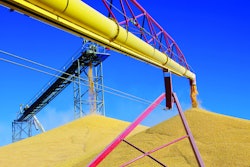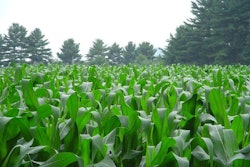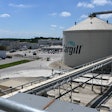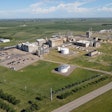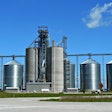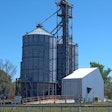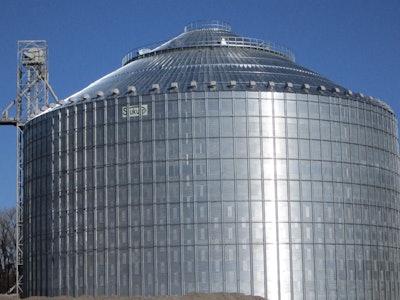
The large size of fall harvested crops in the U.S. have raised very real concerns about the ability to readily store the record supply of crops available this year. Supplies that exceed permanent storage capacity require the use of temporary storage facilities or may require delayed harvest in some circumstances. However, weather related harvest delays to date and a rapid rate of consumption mean that overall storage issues may be less severe than feared this year.
The supply of crops to be stored in the fall of the year consists of the inventory already in store as well as the newly harvested crops. The USDA's SeptemberGrain Stocksreport showed the inventory of feed grains, wheat, and soybeans on September 1, 2014 at 3.528 billion bushels, 422 million bushels larger than the inventory of the previous year. The OctoberCrop Productionreport estimated that the corn, sorghum, and soybean harvest would total 18.806 billion bushels, 1.134 billion bushels larger than last year's harvest. The fall supply of feed grains, wheat, and soybeans is estimated to be 22.334 billion bushels, 1.556 billion bushels larger than the supply of a year earlier. The majority (62 percent) of the total year-over year increase in supply comes from larger corn supplies.
Each year, the USDA provides an estimate of on-farm and off-farm grain storage capacity based on surveys conducted in December. Total storage capacity as of December 1, 2013 was estimated at 23.44 billion bushels. Some additional capacity has been added in 2014, but the total fall crop supply this year likely represents about 95 percent of total storage capacity. While overall storage capacity appears to be fully adequate to handle the available crop supply, issues develop because some of that capacity is occupied by other crops and more importantly the location of available storage capacity does not always align with the location of fall harvested crops. Still, not all of the supply has to be stored. Harvest occurs over a relatively long period of time and crops are continually consumed.
Harvest has proceeded more slowly this year than in the recent past due to wet weather in some major producing areas. As of October 12, the USDA estimated that only 24 percent of the corn acreage had been harvested, compared to the previous 5-year average of 43 percent. That average includes 2009 when only 13 percent of the acreage had been harvested as of the same date. Soybean harvest has been a little more timely, but was estimated at only 40 percent complete as of October 12, compared to the previous 5-year average of 53 percent. The slower pace of harvest has allowed for more crops to be consumed as harvest progresses, reducing the overall requirement for storage space.
Based on USDA weekly export inspection estimates, exports of feed grains, wheat, and soybeans from September 1 through October 16 totaled about 625 million bushels. Based on the USDA's projection of feed and residual use of corn for the 2014-15 marketing year and the recent seasonal pattern of that use, about 1.225 billion bushels of corn were likely used in that category during that same time period. Similarly, about 800 million bushels of corn were likely used for domestic food and industrial products, mostly ethanol. Feed and residual use of other feed grains and wheat was likely near only 50 million bushels as residual use of wheat is often negative during the fall quarter. Based on the National Oilseed Processor Association (NOPA) estimate of the domestic soybean crush for September and assuming a normal seasonal increase in October, about 170 million bushels of soybeans were likely processed during that time period. Based on a typical seasonal pattern, seed, feed and residual use of soybeans was likely near 150 million bushels. Food and industrial use of wheat and feed grains other than corn would have been near 180 million bushels if use followed a typical seasonal pattern.
总的来说,很可能消耗的饲料grains, wheat, and soybeans during the period from September 1 through October 16 totaled about 3.2 billion bushels, or about 69.6 million bushels per day. That pace of use continues so that nearly 16 percent of the total fall crop supply has already been consumed. That magnitude of consumption has substantially reduced the requirement for crop storage capacity, resulting in a modest strengthening of the corn and soybean basis in many areas.
While overall crop storage issues may be less severe than anticipated, regional issues persist. In addition, a more rapid pace of harvest, particularly for corn, is expected to occur this week and beyond as weather conditions remain favorable over much of the production area. A rapid pace of harvest would be expected to keep basis levels for corn and soybeans seasonally weak. A typical post-harvest recovery in basis levels, however, is expected.
Also available at:
http://farmdoc.illinois.edu/marketing/weekly/html/102014.html





